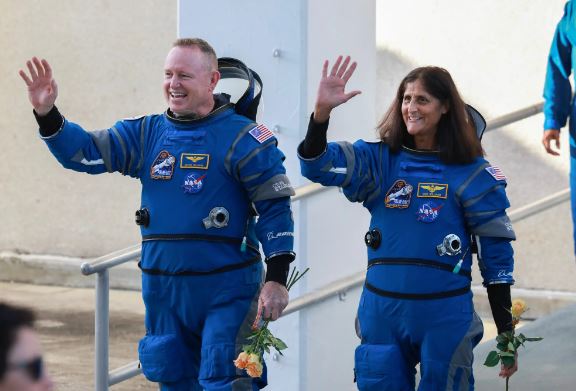After two previous trips to the launchpad that did not culminate in a launch, two NASA astronauts finally reached orbit on Wednesday aboard a spacecraft built by aerospace giant Boeing.
This marked the first crewed flight of the Starliner, a 15-foot-wide capsule, coming four years after SpaceX, the other company NASA contracted for astronaut transportation, launched its first crewed mission to the International Space Station (ISS). Boeing’s repeated delays have now been overcome, setting the stage for it to join SpaceX in providing regular astronaut rides. While SpaceX, initially seen as an upstart, has flown 13 crews to orbit, Boeing’s Starliner had been grounded due to a series of costly delays.
The successful launch of the Boeing vehicle is a significant step in NASA’s strategy to increasingly rely on the private sector for human spaceflight. When Starliner docks with the ISS on Thursday, it will join a SpaceX Crew Dragon capsule already there, fulfilling NASA’s goal of having two American spacecraft capable of ferrying astronauts to orbit.
If this mission succeeds, it will provide a much-needed boost for Boeing, which has faced scrutiny over its aviation safety record following a recent incident with an Alaska Airlines jet. Additionally, Boeing’s space division has been under pressure due to extensive delays with Starliner, plagued by software testing issues, corroded propellant valves, flammable tape, and a key parachute system component that was weaker than expected.
Before the launch, astronaut Suni Williams, the mission’s pilot, referred to the capsule by the name she gave it, Calypso, after the ship used by oceanographer Jacques Cousteau, expressing optimism about the mission.
The launch proceeded smoothly, with the Atlas V rocket engines igniting at 10:52 a.m. Eastern time, sending the Starliner on its path to space. A minor issue with the cooling system, which used more water than anticipated, was resolved once in orbit by switching to a different cooling system. Engineers will investigate this further, but it is not expected to affect the mission.
Astronauts Barry Wilmore and Suni Williams are scheduled to dock with the ISS at 12:15 p.m. on Thursday. They will also test the spacecraft’s manual flying capabilities, a crucial safety feature for emergencies, and thoroughly evaluate the life support systems. The crew will spend at least eight days at the space station, with the mission encompassing 87 test objectives, including assessments of ergonomic factors like seat comfort, suit functionality, and display visibility.
Following the mission, NASA and Boeing will analyze the flight data to finalize Starliner’s certification. This would allow the spacecraft to commence annual operational flights, transporting NASA crews for six-month stays at the ISS. Each Starliner capsule is designed for up to 10 missions.
In 2014, NASA awarded contracts to Boeing and SpaceX to develop replacements for the space shuttles, which were retired in 2011. Initially, Congress was skeptical and repeatedly cut funding for NASA’s commercial crew program. While SpaceX was on the rise, the selection of Boeing helped reassure lawmakers of the program’s viability. NASA initially projected readiness for both companies by 2017, but both encountered delays, a common issue in aerospace.
Boeing’s Starliner faced significant setbacks, notably in December 2019, when an uncrewed test flight was aborted due to software issues that could have destroyed the spacecraft upon re-entry. A subsequent uncrewed test was delayed by corroded propellant valves, pushing the next launch to May 2022. Further issues with flammable protective tape and a weak parachute component caused additional delays, costing Boeing $1.4 billion.
This year, Boeing’s launch attempts began on May 6 but were postponed due to a malfunctioning valve and a helium leak in the Starliner’s propulsion system. Another attempt on Saturday was halted by a technical glitch, but after replacing a faulty power component, Wednesday’s launch proceeded successfully.
This milestone flight of Boeing’s Starliner signifies a significant advance in NASA’s commercial crew program, enhancing the agency’s reliance on private sector partnerships for human spaceflight.

